- Home
- Alison Weir
Wars of the Roses Page 3
Wars of the Roses Read online
Page 3
The chief magnates rarely scrupled to exploit the generosity of a weak king, such as Henry VI, snatching as many Crown lands, honours and lucrative appointments as they could, and growing ever richer while the Crown sank into a morass of debt. Without a firm hand to curb their behaviour, these magnates were virtually out of control, and that posed another threat to the security of government.
The fifteenth century was an age of escalating change in society. The middle classes were growing more prosperous and influential, and some were even defying established custom by intermarrying with the gentry and knightly classes, while others were using the profits from mercantile enterprise to buy themselves a standard of living hitherto permitted only to those of noble birth. At the same time, the nobility were dabbling in trade – the dukes of Suffolk were actually descended from a Hull merchant. The lower classes, fuelled by the teachings of the Lollards, were increasingly questioning the established order. With these challenges came a degree of social anarchy and a lessening of respect for authority and the law.
From the beginning of Henry VI’s reign complaints about corruption, public disorder, riots and the maladministration of justice grew ever more vociferous. By the 1450s the situation had deteriorated so badly that there were urgent demands from all strata of society that something be done by the government to halt the decay. Law and order were in a state of collapse and crime was on the increase. Many soldiers returning from the wars in France found little to welcome them at home. Destitute, inured to violence and freed from military discipline, they frequently took to a life of brigandage and law-breaking. Some were employed by rich lords to intimidate, assault and even murder their enemies, who were often men of the gentry class and unable to defend themselves from armed thugs employed by their social superiors.
The blame for the endemic disorder may be laid squarely at the door of Henry VI, whose responsibility it was to control his magnates and enforce law and order. But the King, far from trying to right the wrongs suffered by his subjects, did nothing. The justices of the peace, who administered justice in his name, continued to be intimidated or bribed, and while the English were justly proud of their legal system and flourishing legal profession, they were by no means blind to its abuse by the great, recognising that the perversion of justice was the greatest evil of the age.
The chronicler John Hardyng wrote:
In every shire, with jacks and sallets clean,
Misrule doth rise and maketh neighbours war.
Most criminals appear to have got away with their crimes. They might be hauled before the justices, if they were caught at all, but many were acquitted, and even if they were not, the Lancastrian kings, especially Henry VI, issued thousands of pardons.
Capital punishment was the penalty for treason – reckoned by far the most heinous crime – murder and theft of items worth more than a shilling (5p). The prescribed punishment for traitors was hanging, drawing and quartering, a barbaric procedure in use since the thirteenth century. Traitors of noble birth usually escaped the full horrors of this method of execution and were dispatched by decapitation, but the lowlier-born were not so fortunate. Some traitors did not stand trial, but were condemned to forfeiture of life, titles and property by Acts of Attainder passed in Parliament. A large proportion of these attainders were later reversed, enabling the accused or his heirs to be restored ‘in blood’, or to their inheritance.
An Italian visitor observed, ‘It is the easiest thing to get a person thrown into prison in this country.’ Prisons were occupied mainly by debtors and common felons, while those who had committed crimes against the state were usually lodged in the Tower of London or other fortresses. There was no police force. The maintenance of law and order was the responsibility of the sheriffs and their local constables, who were often either corrupt or ineffectual.
The prevailing disorder of the period did not stem the creation of wealth by the merchant class. After 1450 the wool trade slowly declined in importance, but at the same time there was increasing demand abroad for other English products, such as woollen cloth, tin, lead, leather and alabaster carvings from Nottinghamshire.
The English-owned port of Calais in north-west France was the chief market-place for England’s wool. A monopoly was enforced by the Merchants of the Staple, who sold the wool exported there to merchants from all over Europe. The stability of Calais was all-important to the merchant classes, but it was undermined during the Wars of the Roses when feuding magnates regarded it as a refuge in exile or, more alarmingly, as a springboard for invasion of England.
Many merchants, especially those in London, grew rich by importing luxury goods from the Mediterranean, which was a centre for commodities from even further afield – spices, medicines, paper, oriental silks, manuscripts, armour, wines, cotton, sugar, velvets and precious stones. For centuries the English had imported wine from Bordeaux and Gascony, and mercifully, with the cessation of the Hundred Years War and the victory of the French, the trade did not cease or suffer unduly.
Fortescue was of the opinion that ‘the common people of this land are the best fed and the best clad of any nation’. Serfdom had declined after the Black Death, and a shortage of labour had resulted in magnates and other landowners being willing to pay men to work on their land. Government efforts to impose wage controls had not succeeded, and hired labour was much in demand. Many lords had vacant tenancies for lease, since leaseholds were rapidly replacing feudal service, and rents were attractively low.
With the disappearance of serfdom the peasants enjoyed greater freedom and mobility, but their lot was often a gruelling one, especially in winter when food was scarce and there was little protection from the cold. Many peasants lived in tiny cottages with one or two rooms, earthen floors, a small window and basic items of furniture. Their livestock lived with them. Many existed in grinding poverty and relied on the charity dispensed by the Church or rich lay persons.
Few peasants suffered hardship, however, as a result of the agricultural depression that lasted from the late fourteenth century to around 1460, during which much land was converted into pasture for sheep. The depression led to falls in rents and prices, which meant that the peasant class, whose labour was so much in demand, had never before been so prosperous. Many farms fell into ruin, especially in the north, and land could be had cheaply. A phenomenon of the age was the self-made peasant who had managed to buy his own land and become prosperous. One such man from Wiltshire gained rich profits from making woollen cloth and left £2000 in his will, an enormous sum for the time.
The average peasant earned between £5 and £10 a year; in 1450 labourers were paid 4d a day, while skilled craftsmen earned between 5d and 8d. It cost around £3.4s.od. (£3.20) to build a cottage. Food, however, was half the price it had been in the fourteenth century, with eggs at 5d for a hundred, milk or beer 1d a gallon, and luxuries such as red wine 10d a gallon, sugar 1s.6d. (7½P) per pound, and pepper 2s (10p) per pound.
The government of the country was carried out by the king’s Council, which sat almost continuously and was made up of lords both temporal and spiritual as well as able men of lesser rank. The king sometimes presided over the Council but his presence was not always necessary to its smooth functioning; however, all its business was carried out in his name.
The Council’s chief functions were to assist the king in the formulation of policy and to carry out the day-to-day business of government. The long minority of Henry VI strengthened the prestige and authority of the Council as well as that of the magnates, giving both a prolonged taste of sovereign power that would not easily be relinquished.
It was the Council that governed the realm, not Parliament. Parliament was not as important, although its power was increasing throughout the fifteenth century. It comprised the three estates of the realm: the lords spiritual and temporal and the commons, who were represented by knights from the shires and burgesses from the boroughs. Parliament’s chief functions were the granting of taxation and the con
sideration of petitions. It was also the supreme court of justice.
The king could summon and dismiss Parliament at will, but there were occasions when he could not function without it. Making war was something ‘the King cannot undertake without assembling his Parliament’, wrote Commines. ‘It is a very just and laudable institution and therefore the kings are stronger and better served. The King declares his intentions and asks for aid from his subjects; he cannot raise any tax in England except for an expedition to France or Scotland or some other comparable cause. They will grant them very willingly, especially for going to France!’ Nor could new laws be passed without the consent of Parliament. Elections, however, were frequently rigged, and the magnates did not shrink from packing Parliament with men of their affinity when their own interests might be at stake.
Parliament could be summoned to meet anywhere in the kingdom, but it usually assembled in Henry Ill’s wonderful Painted Chamber in the Palace of Westminster. Sometimes the Lords would gather in the White Chamber or the Marculf Room in the palace, while the Commons would meet in the refectory of Westminster Abbey.
The administration of government was centred on the enormously influential royal household, which consisted of the court and various departments of state, chiefly the Chancery, the Exchequer, the Chamber and the Wardrobe. These were responsible for the legal, financial and administrative aspects of government, as well as providing for the court and the ceremonial and personal requirements of the king and his family, even to the provision of horses, clothing and food. The royal household was therefore the political nerve-centre of the kingdom and its officers enjoyed a tremendous degree of influence simply by being in close proximity to the monarch.
The capital city and chief seat of government was, of course, London, which then extended to approximately one square mile to the north of the River Thames, and was bounded by a wall with seven gates, all of which were locked at night. The city’s main defences were centred on the Tower of London – fortress, palace and state prison – which had not yet acquired its later sinister reputation.
London had a single bridge, built of white stone across nineteen arches and lined with houses, shops and a chapel. The Thames was London’s main thoroughfare, and travel through the city was quickest by barge or wherry, since the narrow, malodorous streets were frequently congested by carts, crowds and livestock. There were therefore many landing stages along the banks of the river, and hundreds of boatmen plied their trade in waters already crowded with merchant ships and private barges. The average fare paid by travellers was 1d. Along the river were quays, docks, warehouses, wharfs and cranes, and further along, by the Strand, gardens swept down from the mansions of the nobility to the river, each with its own private jetty.
Visitors were struck by the noble buildings – the perpendicular splendour of old St Paul’s Cathedral, the Guildhall, the fine houses of the great, the Palace of Westminster, the nearby abbey, and no less than eighty city churches. Suburbs were already growing outside the walls, but they were small developments, and in 1483 the Italian observer Dominic Mancini was struck by the pastoral peace and fertile green fields that surrounded the capital.
London was governed by its elected Lord Mayor, aldermen and Court of Common Council, all drawn from the ranks of wealthy merchants, men who were jealous of the city’s privileges and exerted considerable political influence. ‘It all belongs to craftsmen and merchants,’ observed Mancini. The city of London was to play a decisive part in the Wars of the Roses, and its support – or the lack of it – for the various contenders for the throne would be crucial.
London was described by one foreign visitor as the busiest of cities, while a Milanese envoy believed it was ‘the wealthiest city in Christendom’. However, it was a Scotsman, William Dunbar, who most aptly summed up the spirit of London, in a poem written in the 1490s:
Strong be thy walls that about thee stand,
Wise be the people that within thee dwell,
Fresh be thy river with his lusty strands,
Blithe be thy churches, well-sounding be thy bells;
Rich be thy merchants, in substance that excels,
Fair be their wives, right lovesome, white and small,
Clear be thy virgins, lusty under kirtles:
London, thou art the flower of cities all!
The fifteenth century was a period in which people’s standards of living rose considerably. Surviving churches, castles and manor houses, as well as inventories of furnishings and property, bear witness to this.
In spite of the unsettled times few heavily fortified castles were built, and existing castles were modernised by the addition of great halls, large windows and luxurious domestic accommodation. The rich built themselves country mansions and manor houses that satisfied their need for comfort and aesthetic pleasure. These houses were not built with defence in mind, although many sported defensive features such as moats, crenellations and gatehouses as features of decoration. This trend in building shows a certain confidence in the long-term stability of the country, and it continued even throughout the Wars of the Roses, serving as proof that those wars had less effect on the social and cultural life of the nation at large than might have been imagined from a reading of the works of contemporary chroniclers.
In addition to a great hall, most houses were now built with a number of smaller chambers for family use, reflecting a new taste for privacy. The fireplace replaced the open hearth in the centre of a room, windows became larger, letting in more light, and often had carved frames of wood or stone; glass was less of a luxury than it had been, and wealthy families would commission stained-glass windows, often depicting coats of arms, for their new homes. Furnishings, such as tester beds, settles, tables, stools, chests and cupboards, were few but of good quality and fashioned from solid wood. Elaborately carved beds with rich hangings, woven tapestries or painted hangings, and utensils of gold and silver plate were often bequeathed in wills.
This was the great age of church building and adornment. English craftsmen were particularly skilled in carving wood and alabaster, making decorative grilles and producing jewel-coloured glass. It was also a growth period for English music. The Yorkist court was famed for its musicians and for its patronage of composers. The carol, originally a piece of music composed in honour of any great occasion in the calendar, which could be sung and danced to, was particularly fashionable. Many of today’s most popular Christmas carols date from this period.
English was by this time the language of all classes, and many books were written in the vernacular. The nobility were mostly able to speak French, which had been the language of the court and the legal profession until the late fourteenth century, and most educated people were taught Latin, which was still the international language of the Church and of Christendom. There was a steady growth in public literacy throughout the period. Books, although luxury items because they were hand-produced, were more readily available and no longer confined to the libraries of the Church or the universities. Many nobles, knights and merchants now collected books, and some amassed quite large libraries. The fifteenth century produced no great literary figures of the stature of Chaucer, whose works were still widely read. The foremost writers of the period were John Gower, Thomas Hoccleve and John Lydgate.
Many schools were founded, most administered by the Church, although some lay persons were founding secular grammar schools in towns and cities. The régime in all schools was strict and followed the precept ‘Spare the rod and spoil the child’. Whereas the sons of the nobility had long “received an education in both military and academic skills, the rising middle classes now also wanted their sons reared ‘to cunning learning and erudition’, because they knew it was possible to secure worldly advancement with a sound education. Many went on to university and thence into the Church. There was a planned expansion in the universities, mainly to provide sufficient academics to meet the needs of the Church, but also to provide more secular opportunities for ambit
ious young men.
Formal education was provided for boys only. Women were seen as the inferior sex and regarded as the chattels of men. The author of The Goodman of Paris (c. 1393) advised wives to behave like faithful dogs in order to please their husbands, and Margaret Paston of Norfolk referred to John Paston as ‘right worshipful husband’ in her letters. The husband was lord of his family as God reigned supreme over the universe. The chief duty of a wife, therefore, was to be submissive. If there was discord in a marriage, or infertility, people automatically assumed it was the wife’s fault. Women had virtually no freedom beyond that which their fathers or husbands allowed them. Within these confines, however, many managed businesses, shops, farms or noble estates, and proved themselves the equal to men.
Marriages were arranged for social, financial or territorial advantage. The concept of marrying for love was an alien one, hence the outrage in 1464 when King Edward IV impulsively married a commoner who refused to be his mistress.
A wife was expected to manage her husband’s household, and his estates in his absence, set a good example to her children and servants, and – above all – bear sons to ensure that her lord’s estates remained within the family. Daughters were useful for securing marriage alliances, but every man of property wanted a son to inherit it. The price women paid for this was high. Many died in childbirth or worn out by repeated pregnancies by the time they were thirty, the average life expectancy of women at this time.
Marriage was regarded by the Church as a necessary evil, following the dictum of St Paul, who said it was better to marry than to burn. Most people married, unless they were apprentices or in holy orders, and child marriages were not uncommon. One heiress, Grace de Saleby, had been thrice married by the age of eleven; John Rigmardin was a bridegroom at three years old, and thirteen-year-old John Bridge, after being put to bed with his bride on their wedding night, bawled to go home to his father.

 Richard III and the Princes in the Tower
Richard III and the Princes in the Tower Britain's Royal Families: The Complete Genealogy
Britain's Royal Families: The Complete Genealogy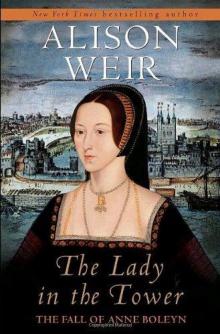 The Lady in the Tower: The Fall of Anne Boleyn
The Lady in the Tower: The Fall of Anne Boleyn Six Wives of Henry VIII
Six Wives of Henry VIII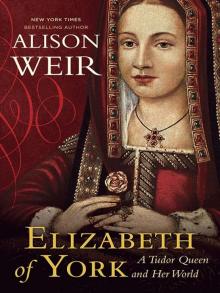 Elizabeth of York: A Tudor Queen and Her World
Elizabeth of York: A Tudor Queen and Her World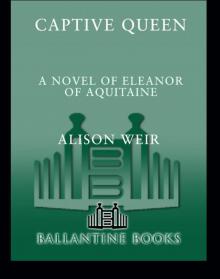 Captive Queen
Captive Queen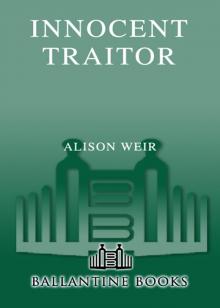 Innocent Traitor
Innocent Traitor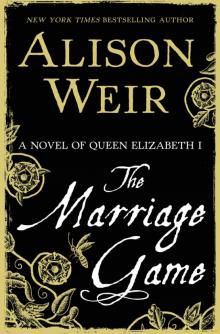 The Marriage Game
The Marriage Game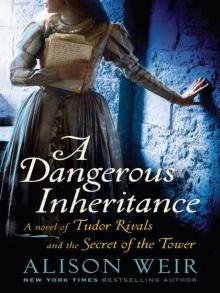 A Dangerous Inheritance
A Dangerous Inheritance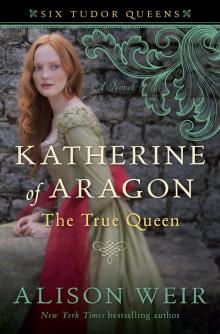 Katherine of Aragón: The True Queen
Katherine of Aragón: The True Queen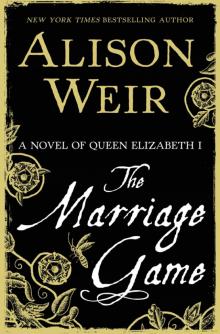 The Marriage Game: A Novel of Queen Elizabeth I
The Marriage Game: A Novel of Queen Elizabeth I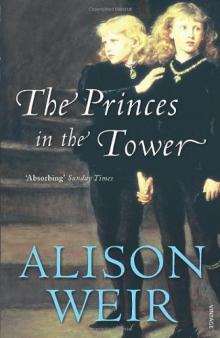 Princes in the Tower
Princes in the Tower Anne Boleyn: A King's Obsession
Anne Boleyn: A King's Obsession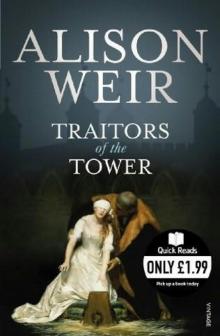 Traitors of the Tower
Traitors of the Tower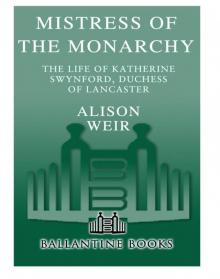 Mistress of the Monarchy: The Life of Katherine Swynford, Duchess of Lancaster
Mistress of the Monarchy: The Life of Katherine Swynford, Duchess of Lancaster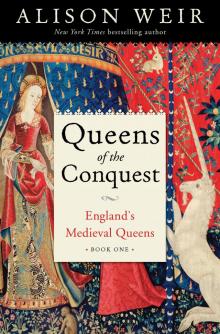 Queens of the Conquest: England’s Medieval Queens
Queens of the Conquest: England’s Medieval Queens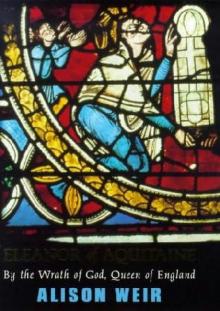 Eleanor of Aquitaine: A Life
Eleanor of Aquitaine: A Life Mary, Queen of Scots, and the Murder of Lord Darnley
Mary, Queen of Scots, and the Murder of Lord Darnley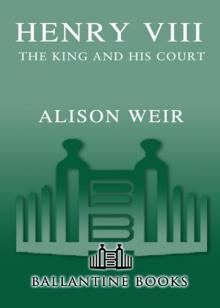 Henry VIII: The King and His Court
Henry VIII: The King and His Court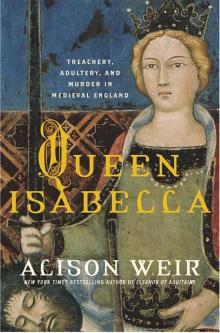 Queen Isabella: Treachery, Adultery, and Murder in Medieval England
Queen Isabella: Treachery, Adultery, and Murder in Medieval England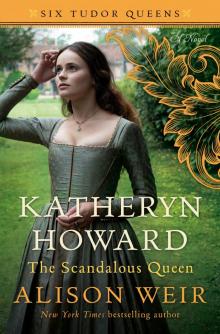 Katheryn Howard, the Scandalous Queen
Katheryn Howard, the Scandalous Queen Arthur- Prince of the Roses
Arthur- Prince of the Roses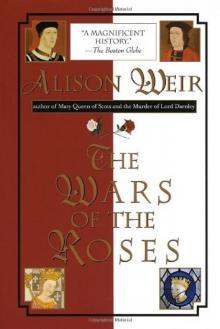 The Wars of the Roses
The Wars of the Roses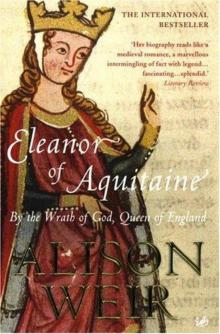 Eleanor of Aquitaine: By the Wrath of God, Queen of England
Eleanor of Aquitaine: By the Wrath of God, Queen of England Mary Boleyn: The Great and Infamous Whore
Mary Boleyn: The Great and Infamous Whore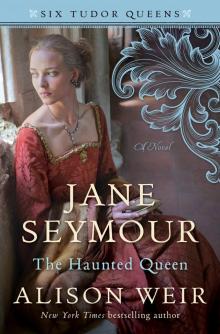 Jane Seymour: The Haunted Queen
Jane Seymour: The Haunted Queen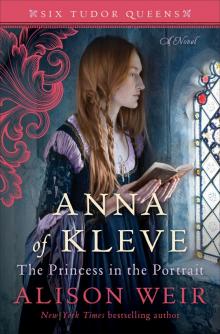 Anna of Kleve, the Princess in the Portrait
Anna of Kleve, the Princess in the Portrait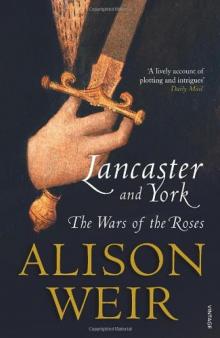 Lancaster and York: The Wars of the Roses
Lancaster and York: The Wars of the Roses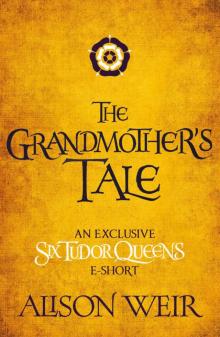 The Grandmother's Tale
The Grandmother's Tale The Princess of Scotland (Six Tudor Queens #5.5)
The Princess of Scotland (Six Tudor Queens #5.5)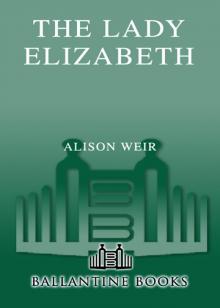 The Lady Elizabeth
The Lady Elizabeth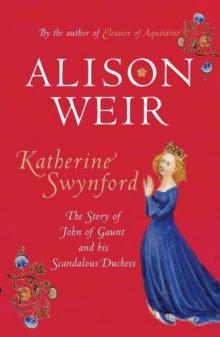 Katherine Swynford: The Story of John of Gaunt and His Scandalous Duchess
Katherine Swynford: The Story of John of Gaunt and His Scandalous Duchess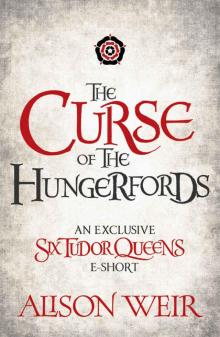 The Curse of the Hungerfords
The Curse of the Hungerfords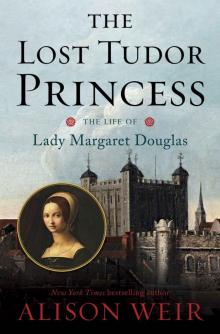 The Lost Tudor Princess: The Life of Lady Margaret Douglas
The Lost Tudor Princess: The Life of Lady Margaret Douglas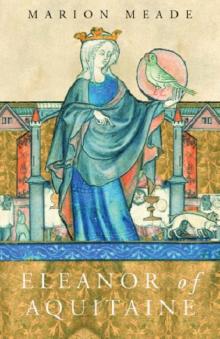 Eleanor of Aquitaine
Eleanor of Aquitaine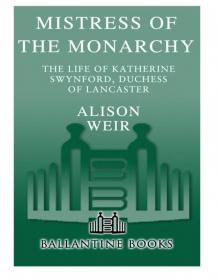 Mistress of the Monarchy
Mistress of the Monarchy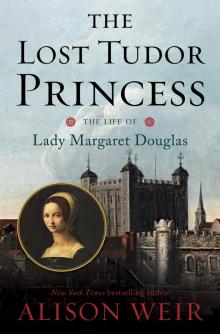 The Lost Tudor Princess
The Lost Tudor Princess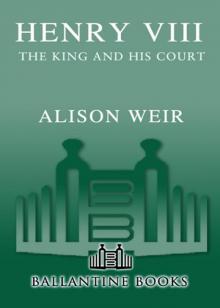 Henry VIII
Henry VIII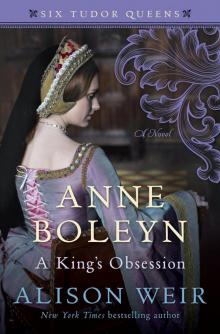 Anne Boleyn, a King's Obsession
Anne Boleyn, a King's Obsession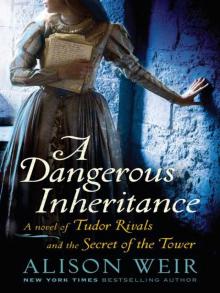 A Dangerous Inheritance: A Novel of Tudor Rivals and the Secret of the Tower
A Dangerous Inheritance: A Novel of Tudor Rivals and the Secret of the Tower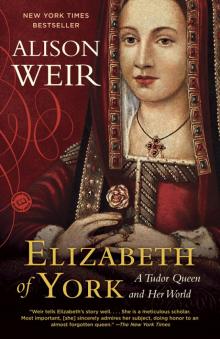 Elizabeth of York
Elizabeth of York Katherine of Aragon, the True Queen
Katherine of Aragon, the True Queen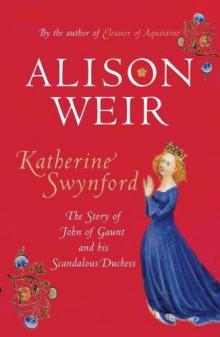 Katherine Swynford
Katherine Swynford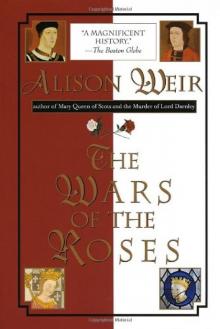 Wars of the Roses
Wars of the Roses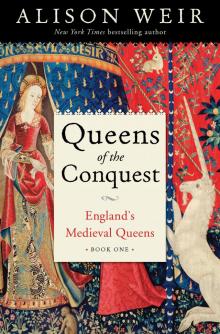 Queens of the Conquest
Queens of the Conquest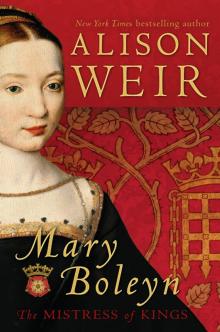 Mary Boleyn
Mary Boleyn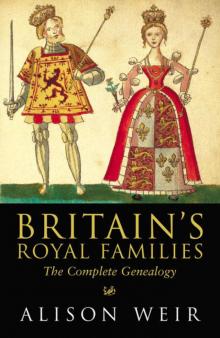 Britain's Royal Families
Britain's Royal Families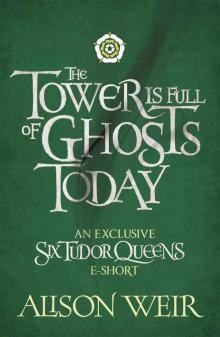 The Tower Is Full of Ghosts Today
The Tower Is Full of Ghosts Today Life of Elizabeth I
Life of Elizabeth I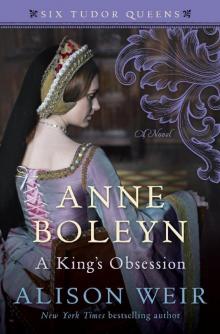 Anne Boleyn A King's Obssession
Anne Boleyn A King's Obssession Lancaster and York
Lancaster and York Jane Seymour, the Haunted Queen
Jane Seymour, the Haunted Queen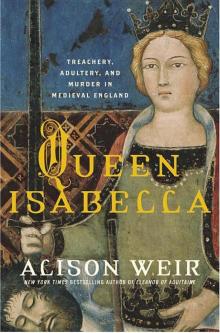 Queen Isabella
Queen Isabella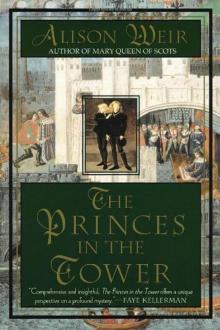 The princes in the tower
The princes in the tower